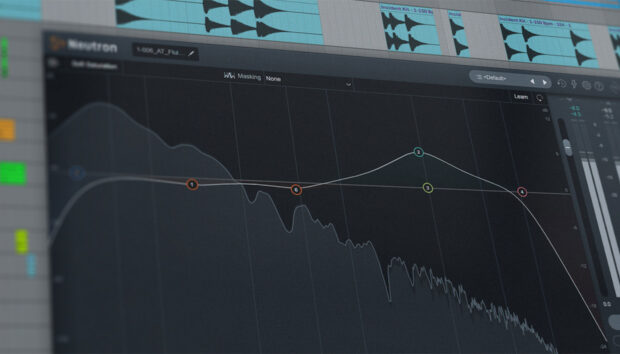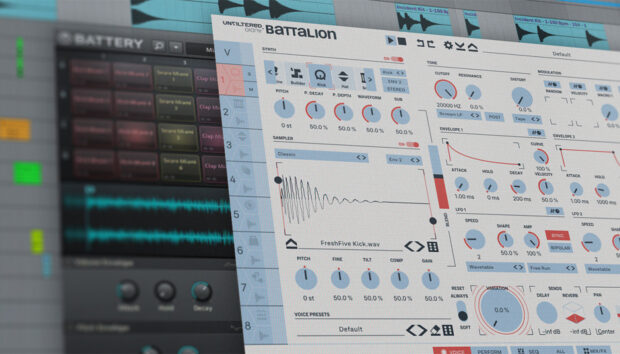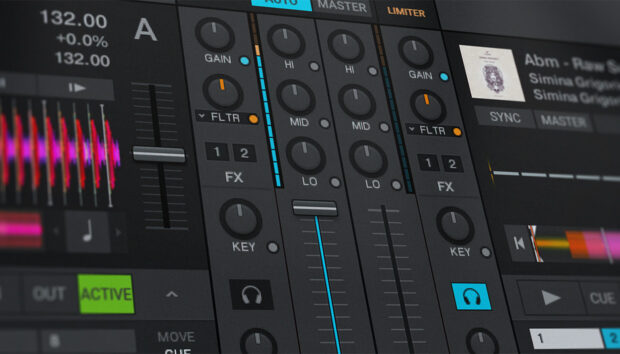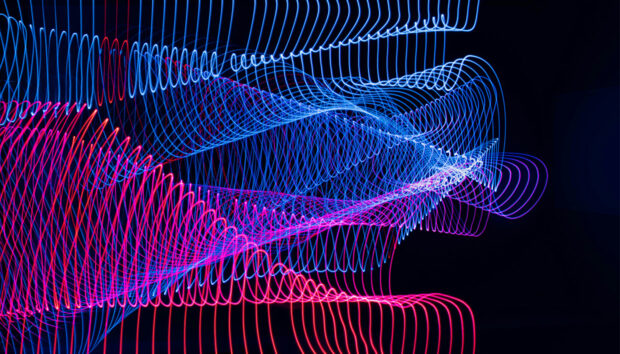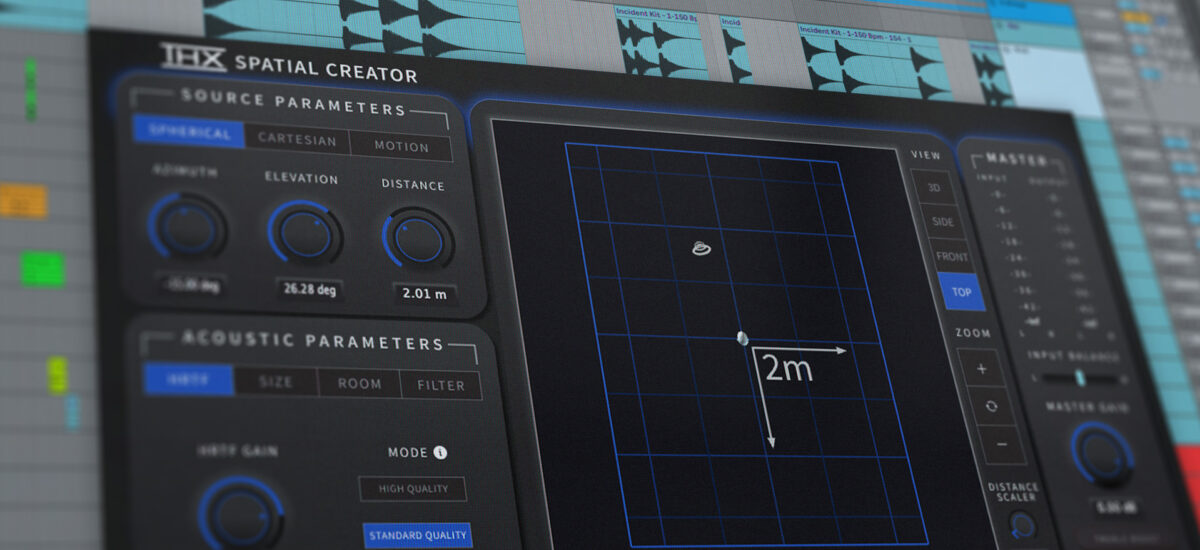
In the last few years, spatial audio has been pushed to the forefront of conversations around mixing music, with solutions such as THX® Spatial Audio, Dolby Atmos, Sony, Sennheiser and others all providing alternatives. While audio workstations like Logic Pro and Studio One allow you to create immersive audio mixes with nothing more than a set of headphones, there are some compromises inherent to these industry approaches.
Enter THX® Spatial Creator, a new immersive audio plugin from Plugin Alliance and THX – yes, that THX from your favorite movies, like Return of the Jedi – that can easily craft immersive audio mixes specifically tailored for headphones. Based on THX Spatial Audio core technology, THX Spatial Creator keeps stereo compatibility in mind and works with all major DAWs.
In this article, discover what immersive audio is and how you can use it in your music production to create a truly unique listening experience.
Jump to these sections:
- What is immersive audio?
- A brief history of multichannel audio
- What is binaural sound?
- How to use THX Spatial Creator in mixing
- How to master and release audio mixed with THX Spatial Creator
Follow along with this tutorial using the THX Spatial Creator plugin.
What is immersive audio?
Immersive audio, sometimes also called spatial audio, 3D audio, or 360-degree sound, is a way of presenting sound – be it for music, film, games, podcasts, audiobooks, or more – that feels more, well, immersive than traditional stereo mixes. Put another way, when you’re out and about in the world, you hear sounds all around – in front, behind, to the sides, above, and sometimes even below. Different types of immersive audio formats have attempted to recreate the all-encompassing nature of sound to varying degrees and with mixed success since the 1950s.
In the last few years, there’s been a renewed interest in immersive audio thanks, in part, to some exciting new technological advances. Today, there are tools that allow you to craft convincing immersive audio soundscapes right inside your favorite headphones that you already own. Before exploring the tools and techniques, let’s learn more about immersive formats over the years.
A brief history of multichannel audio
In the beginning, there was mono. The glory days of Thomas Edison reciting “Mary Had a Little Lamb” onto a wax cylinder. In technical terms, “mono” refers to a single audio channel played through one loudspeaker. However, in modern usage, you’re more likely to encounter it as a phantom mono sound source. This happens when two loudspeakers play the same audio signal. On a stereo system, it creates the illusion of sound coming from a non-existent center speaker. When using headphones, it feels as if the sound is originating from within your noggin.
Mono was all fine and good until 1931 when all-around-genius Alan Blumlein casually invented stereo – and a whole slew of related technologies, many used to this day – prompted by a visit to the cinema with his wife.
In a pattern that you will see repeat, many advancements in immersive audio have arisen from technology pioneered for the movies. Stereo allows you to position sounds anywhere between a pair of speakers – and sometimes even slightly beyond or behind them.
By changing the balance of how much of a sound goes to the left speaker vs. the right speaker, you can create the illusion that the sound is coming from anywhere between them – the phanom center image is a special case where the level to left and right are equal – and advanced techniques even allow you to move sounds beyond the outside edges of the speaker pair.
While stereo took a good 30 years to catch on for music reproduction at home, the expansion from mono to stereo prompted the development of surround formats with additional channels as early as the 1950s. First came quad – or quadraphonic – sound, which used four channels to pull some sounds out to about 5° behind the listening position on either side. If you think it’s amazing that stereo can come out of a single groove in a vinyl record, wait until I tell you that in its “heyday” quadraphonic was also played in homes off of records – albeit with specialized receivers and decoders.
Remember what I said about the movies? It was Francis Ford Coppola’s Apocalypse Now that pioneered the transition to channel-based surround sound formats like 5.1 and 7.1, which became the industry standard from the late 1970s until the early 2010s. In a similar technological push forward. On the other hand, Pixar’s Brave was groundbreaking in its use of Dolby Atmos. This technology took surround sound to the next level by introducing height channels and dynamic object-based audio.
THX at the movies
THX was founded by George Lucas and was developed by Tomlinson Holman for the debut of Return of the Jedi. Holman created a set of audio standards and technologies that were used to certify movie theaters. If you go to a THX® Certified theater you can be assured that the audio experience will be as near as possible to what the film’s audio team heard when they mixed the film. It includes criteria for acceptable background noise levels, acoustic treatment and frequency response, and room reverberation times.
This has admittedly been a whistle-stop tour, and there’s a more in-depth article on sonic imaging if you’re curious. At this point, I’d like to move on to another way of listening to immersive audio that hasn’t been touched on yet: binaural sound.
What is binaural sound?
Binaural sound is a way of experiencing immersive audio with nothing more than a pair of headphones. THX Spatial Audio is a binaural approach and is the driving technology behind the new THX Spatial Creator plugin available now in the Plugin Alliance online marketplace. Binaural sound is a topic that people spend years, or even decades studying, and it has some complexities that this blog won’t try to cover today, but let’s review some of the key ways in which binaural sound works.
The underlying idea is simple: Since you only have two ears, shouldn’t you be able to use just two audio channels to experience sounds coming from any direction, rather than relying on complex setups like 5.1 or 9.1.4 systems? Well, in fact, yes, but there are a few important considerations. First, how is it that you can tell when a sound is coming from behind, or above you? A lot of this has to do with what’s known as a head-related transfer function (HRTF) which is basically a fancy way of describing how your head and ears shape sounds before they make it to your eardrums.
The way you localize sounds involves several factors. First, your ears are spaced apart, so when a sound comes from one side, it reaches one ear slightly before the other due to the finite speed of sound. Second, your head blocks some high-frequency sounds from reaching the ear opposite to the sound’s source. Lastly, the shape of your external ear, or pinna, also affects how you hear by reflecting, absorbing, and filtering sounds differently based on their direction.
Another factor influencing how you perceive the direction and environment of a sound is the sonic reflections that bounce around a space and reach your ears. Each physical space has its own sonic “fingerprint” that you can use to interpret the size and shape of the environment, along with the location of sound sources within it. Put all that together with the most sophisticated audio signal processor – a brain – and with just two ears you can pinpoint nearly any direction a sound is coming from and infer a lot about the space that it’s in.
How do you create spatial audio for headphones?
Perhaps the most authentic way to create binaural sound is to record it. And in fact, there are small microphones you can buy that go in your ears like earbuds, which you can use to record sounds all around you. Since the mics are in your ears, on the sides of your head, the recordings are likely to sound extremely realistic to you. However, they can also convey a lot of that realism to other listeners. For example, check out this video from The Sound Traveler on YouTube.
While the natural way we perceive sound direction is fascinating, it’s not very practical for creating mixed, multitrack content. Imagine if you could capture a general model of how humans hear (HRTF) and place it in a virtual room. This would allow you to position sounds in a 3D space as you like, and others could experience it using just their headphones. That’s exactly what THX empowers creators to achieve with the THX Spatial Creator plugin.
*Side note, I absolutely love the story of how the THX Deep Note was created. And if you want to hear this in THX Spatial Audio, listen over any headphones or earbuds to the latest THX Trailer here. If you’ve never heard these, you should absolutely check it out.
What is THX Spatial Creator?
THX Spatial Creator is a spatial processor that combines a carefully selected HRTF model with a high-quality room reflection engine – or immersive reverb. This allows you to place sound sources within a virtual room. As with all binaural content, the results are best experienced through headphones, but if you’re thoughtful with your use of the plugin, you can craft content that can coexist on traditional stereo playback systems. That said, some 3D elements may only pop out in the enhanced headphone listening experience.
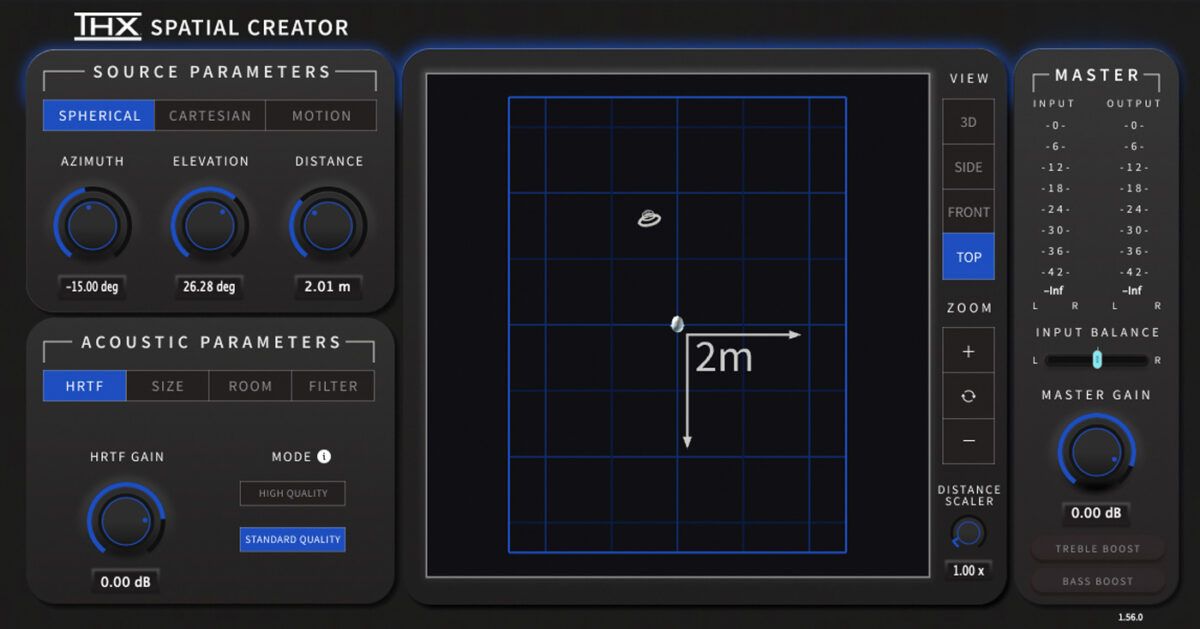
How to use THX Spatial Creator in mixing
There’s no one right way to use THX Spatial Creator in a mix, but if you think of it like any other creative tool, you’ll be on the right track. What do I mean by that? Just like you probably don’t apply distortion, or chorus, or tremolo to every single element of a mix, in most cases it probably won’t make sense to do that here either. In fact, by reserving spatial processing for a few special elements, or bits of ear candy, you’ll likely get more impact from it.
That said, let me share some examples of how I’ve enjoyed using it so far on a spatial mix I did of “Where You Belong” by Hayward. But first, two considerations:
- If you haven’t already, grab your headphones. This will play back on regular speakers, but the elements that sound like they’re behind or above you will be greatly enhanced on headphones in particular.
- THX Spatial Creator is inherently a mono-in/stereo-out plugin. That means if you’re working with stereo sources – synths, reverbs, ping-pong delays, etc. – you’ll need to pay some special care. This blog will share some techniques to do this along the way, but it’s worth mentioning now.
1. Placing sounds beyond traditional pan positions
Perhaps the most obvious technique is to position sounds in places you couldn’t through panning alone. You might not want to do this to key, focal elements of the mix – like the lead vocal, or bass – but putting some auxiliary percussion back behind you, or some comping guitars up in the top-front corners, or some synth embellishments up overhead, can help make key parts of a song more enveloping. Here’s an example of exactly that.
Keep in mind that if you’re working with a stereo source, you’ll need to split it into dual mono – one track for the left channel and one for the right – and use two instances of THX Spatial Creator to position a virtual stereo pair of speakers. Audio workstations like Studio One and Ableton make this fairly easy with their Splitter and Effect Rack devices that can be saved and recalled on any channel.
You can also simply duplicate a stereo track, put a copy of THX Spatial Creator on each, and use the Input Balance control – above the Master Gain knob on the right – to set one to hard left and the other to hard right.
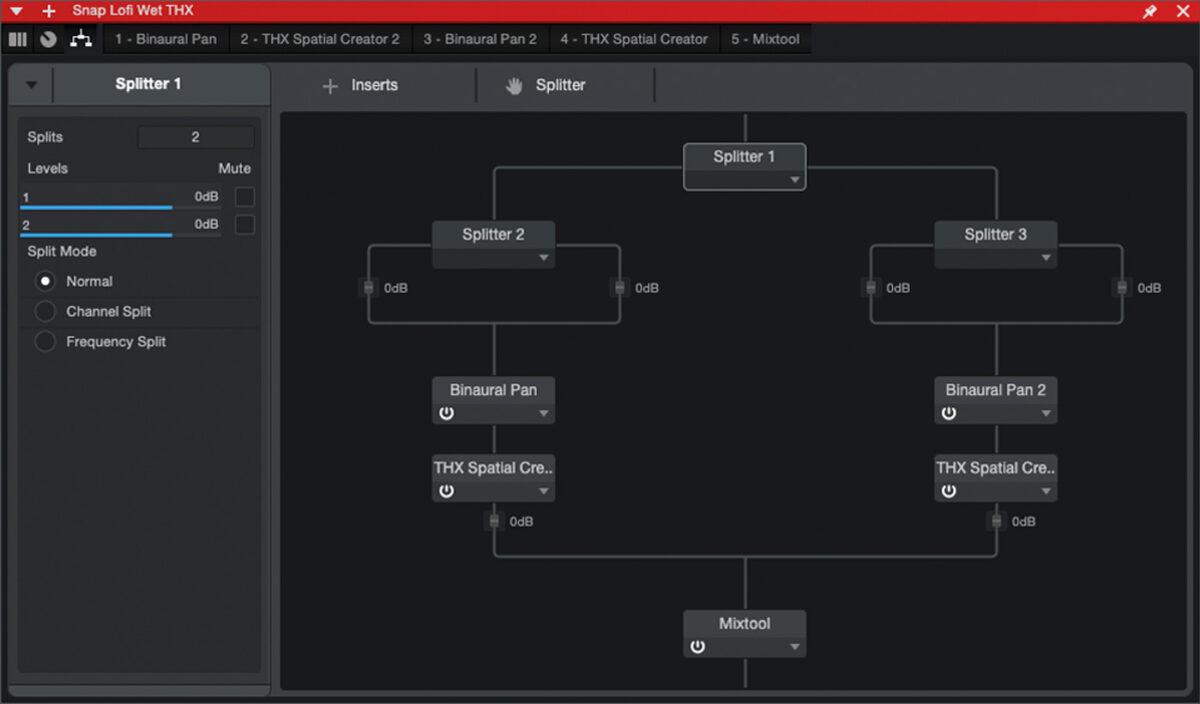
If you find that the position of a sound is changing the tonal balance too much, don’t forget that Spatial Creator has Treble and Bass Boost buttons – found under the Master Gain on the right – that can allow you to quickly add some high or low end back without compromising the positional cues imparted by the HRTF and room reflections.
2. Adding motion
Another way to add excitement is to use THX Spatial Creator’s built-in motion feature. This gives you access to circling motions, along with auto-pans in all four cardinal directions, and at different distances. Furthermore, it allows you to quickly accomplish these sorts of moves without any complex automation required.
Here, I’ve taken one synth and made it circle in a wide oval – notably, I’ve used a frequency splitter in Studio One to leave the low-end alone – while also sending a stereo percussion loop to two separate instances that orbit in a further circle with a 180° offset, sort of like being inside a Leslie cabinet.

3. Creating a unique space for temporal effects
Yet another approach could be to eschew the idea of putting THX Spatial Creator on individual channels, and rather create multiple mono buses that each have a unique location, almost like virtual surround speakers. You can then route temporal effects like reverbs and delays to these buses to add an extra sense of dimensionality and space. In fact, you can use THX Spatial Creator as a reverb all on its own. Just switch to High Quality mode in the HRTF tab and dial in your room parameters to taste – or use a preset in the size tab. The position can then be used to alter wet/dry blend and location within the virtual space.
However, in this example, I’ve routed a stereo reverb to a virtual pair of speakers at the back corners of a fairly large space. I’ve also used the same space on the string bus to give the string section some depth and move them away from right next to your ears.
Is spatial audio better for music?
You can create compelling, moving music in mono. However, spatial processors, like THX Spatial Creator, offer a new set of tools that can help craft a more immersive sonic landscape for your music and help enhance its underlying emotion. Spatial audio is a tool, and like all tools it can be abused and misused.
Now let’s discuss why THX Spatial Creator is better suited to creating dedicated binaural mixes than other tools on the market.
By creating binaural mixes with THX Spatial Creator, you create a standard stereo file that can be sent to any streaming service, and you can ensure that when your fans listen to the mix using headphones, they’ll have the experience you intended. Doesn’t that sound nice?
Applications beyond music
It’s worth pointing out that THX Spatial Creator can be very useful for applications beyond music, namely in voiceover. Whether you’re producing podcasts, audiobooks, or videos for YouTube, putting your narration in a realistic space and getting it out of your listeners’ heads can boost engagement and increase retention time.
For example, in a podcast with a host and two guests, you could put them all in the same virtual room, with a small amount of natural space between them. This creates a much more natural and engaging experience than piling them all on top of one another, or worse, hard-panning them without any sense of space around them.
How to master and release audio mixed with THX Spatial Creator
You didn’t think I’d let you go without talking a bit about mastering, did you? No such luck! The good news is that there’s not much to worry about that hasn’t been discussed before. In fact, there are probably only three main principles you should keep in mind when mastering THX immersive audio.
- Be careful with EQ. Subtle, broad-strokes moves can be ok, but if you find yourself using high Q-factors, or boosts and cuts of more than maybe 1 dB or so, listen very carefully to the impact on spatial elements, particularly those with motion. If there’s a major tonal imbalance that needs to be corrected, it’s worth going back to the mix to make the correction before any instances of the THX Spatial Creator plugin. This is particularly true of frequencies in the upper-midrange, and applies to spectral processors like Clarity and Stabilizer in iZotope Ozone.
- Be careful with stereo imaging processors such as Imager. Like EQ, these can disrupt the audio cues that our brain interprets as spatial information. Due to the very nature of spatial audio, if you find yourself wanting to make stereo imaging adjustments at the mastering stage, your best bet is to revisit the mix. Another alternative could be to create a non-spatial, stereo-only bus that you can apply stereo imaging – and EQ, for that matter – to.
- Dynamic processing has less impact on spatial cues than the first two, but don’t abuse it. If your goal is to make a more open, spacious mix, why would you then go and crush it at the mastering stage? Most things out in the real world don’t sound that way. As with any other format there are no specific targets or numbers to chase, just use your ears and your best judgment!
Finally here’s the full mix and master of “Where You Belong” both with and without spatial processing. The THX Spatial Audio mix includes all the individual elements demonstrated in tips 1–3 as well as some enhancements to backing and ad-lib vocals to make them wider and more enveloping.
Releasing your THX Spatial Audio mixes
As I alluded to earlier, there’s no special hardware or streaming service required to distribute and listen to your spatial audio mixes created with THX Spatial Creator. The output is simply a binaural mix that can be contained in any standard stereo WAV file. That said, to make it clear to your fans that there’s something special going on here, you may want to include “(THX Spatial Audio)” or “listen over headphones” in your song or album titles or in the content description for podcasts and videos. How easy is that!?
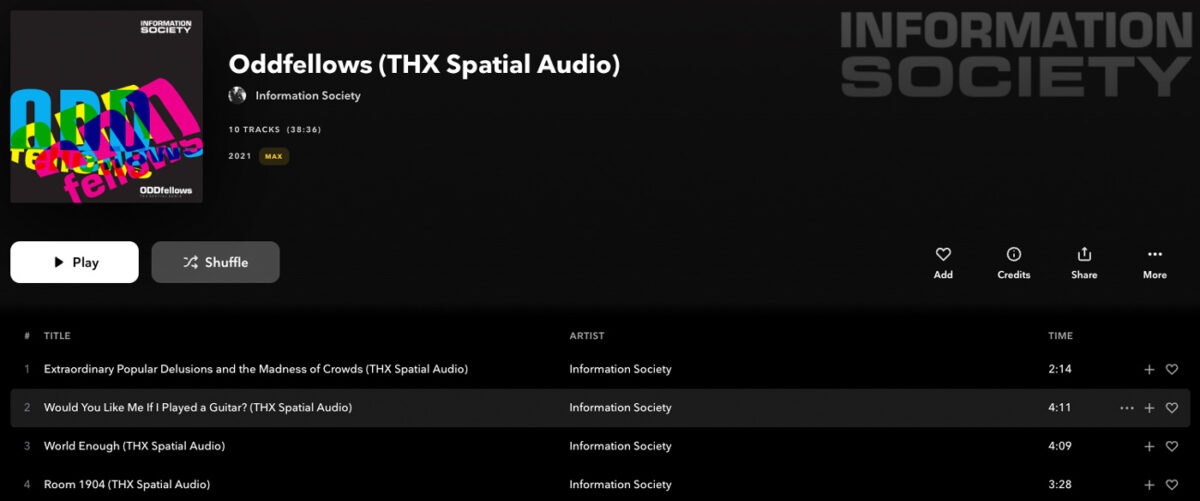
Start creating immersive audio mixes with THX Spatial Creator
At this point you should have a good understanding of what immersive audio is, as well as an overview of its history and development. You’ve also learned how binaural sound differs from other immersive formats, and how it’s now easier than ever to inject binaural elements into your mixes with THX Spatial Creator. Remember that this can be just as useful for narration and voice over production as it can in music.
Lastly don’t forget the three tenets of mastering for THX Spatial Audio. However you choose to use it, a whole new sonic landscape beyond the confines of your speakers is now open to you. Good luck, and happy immersion!








